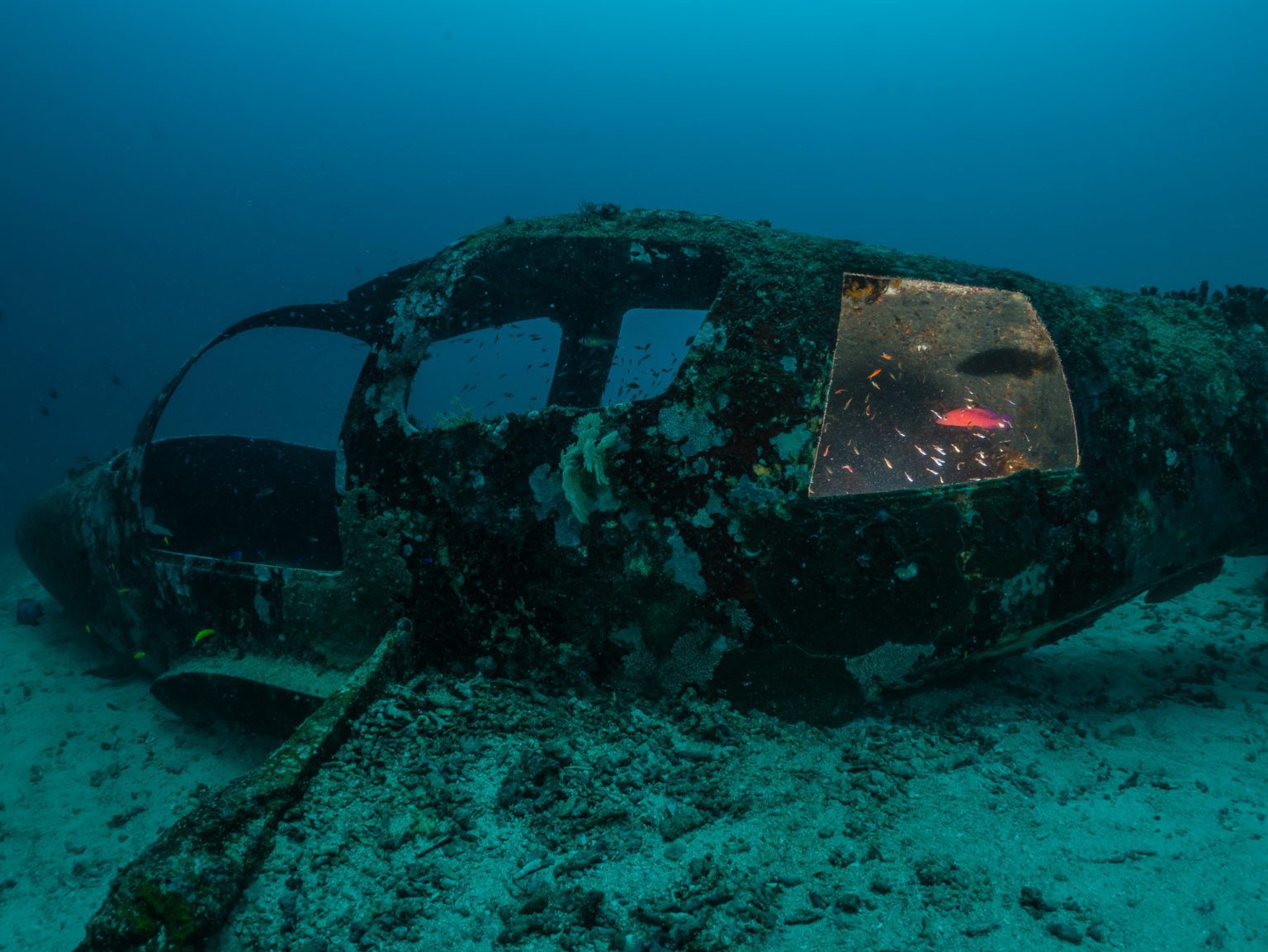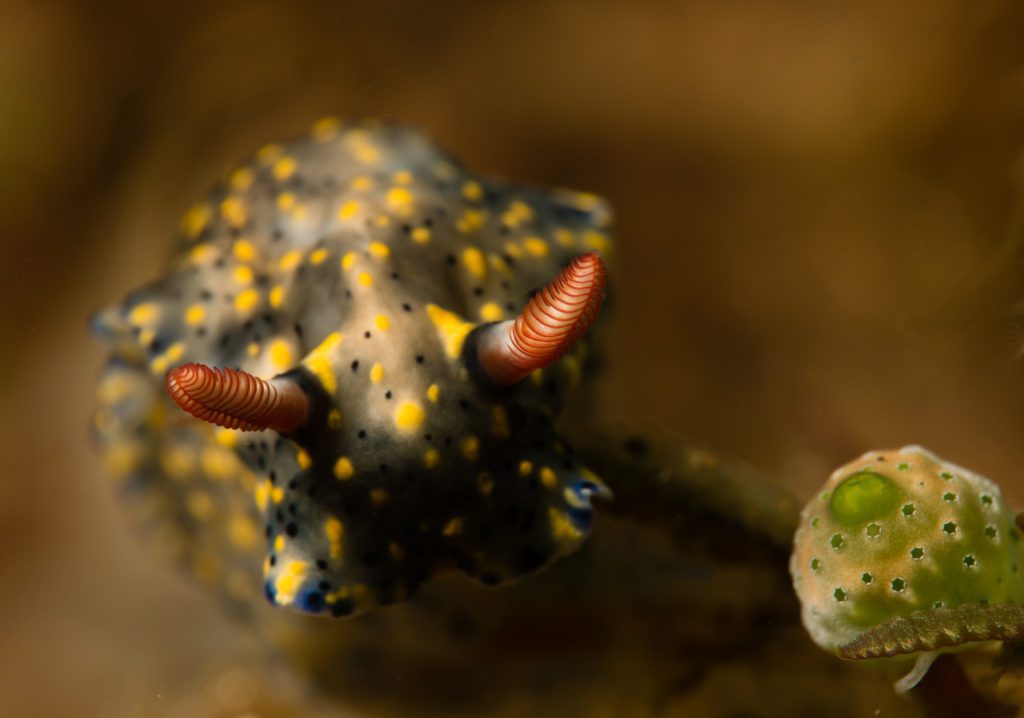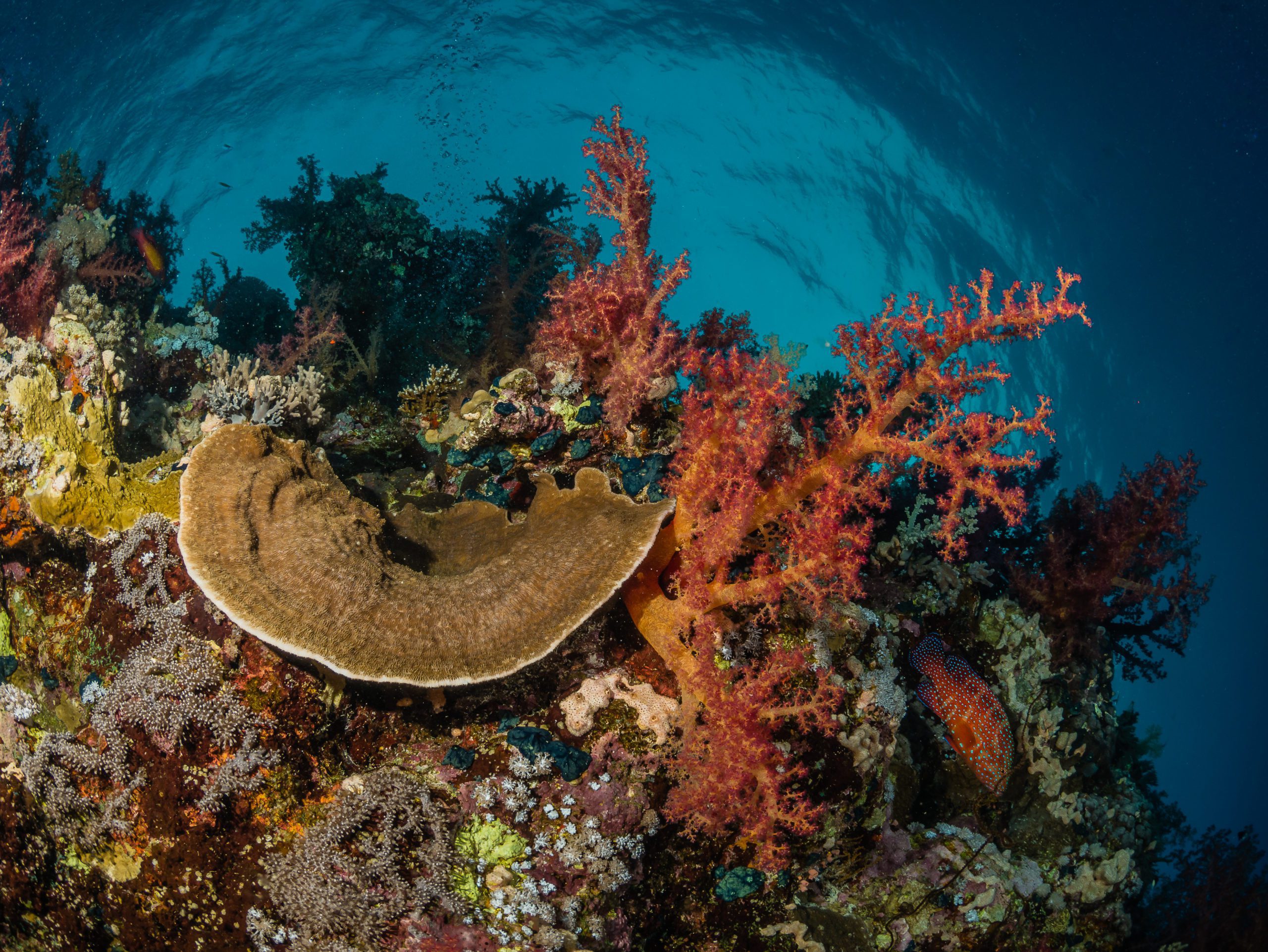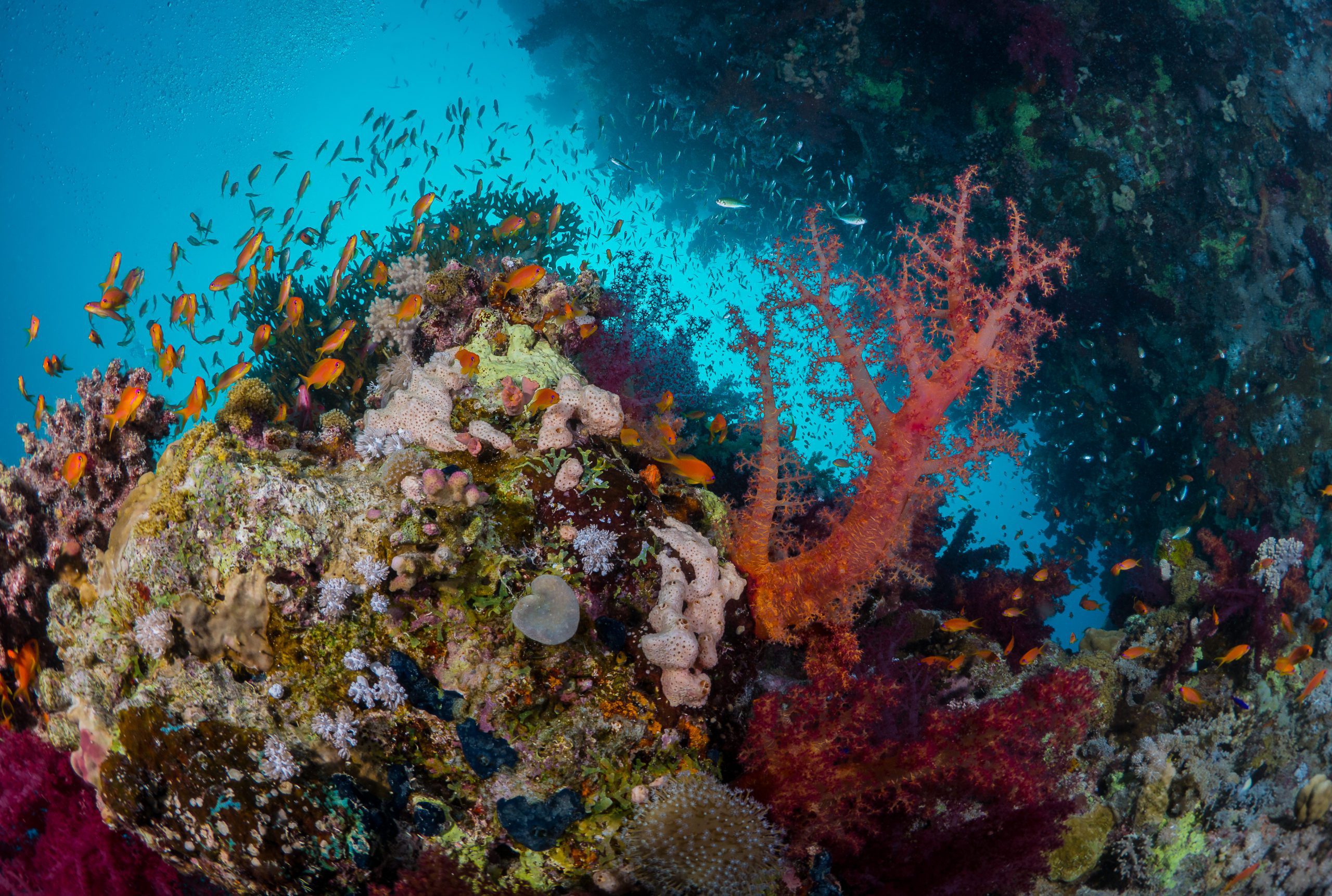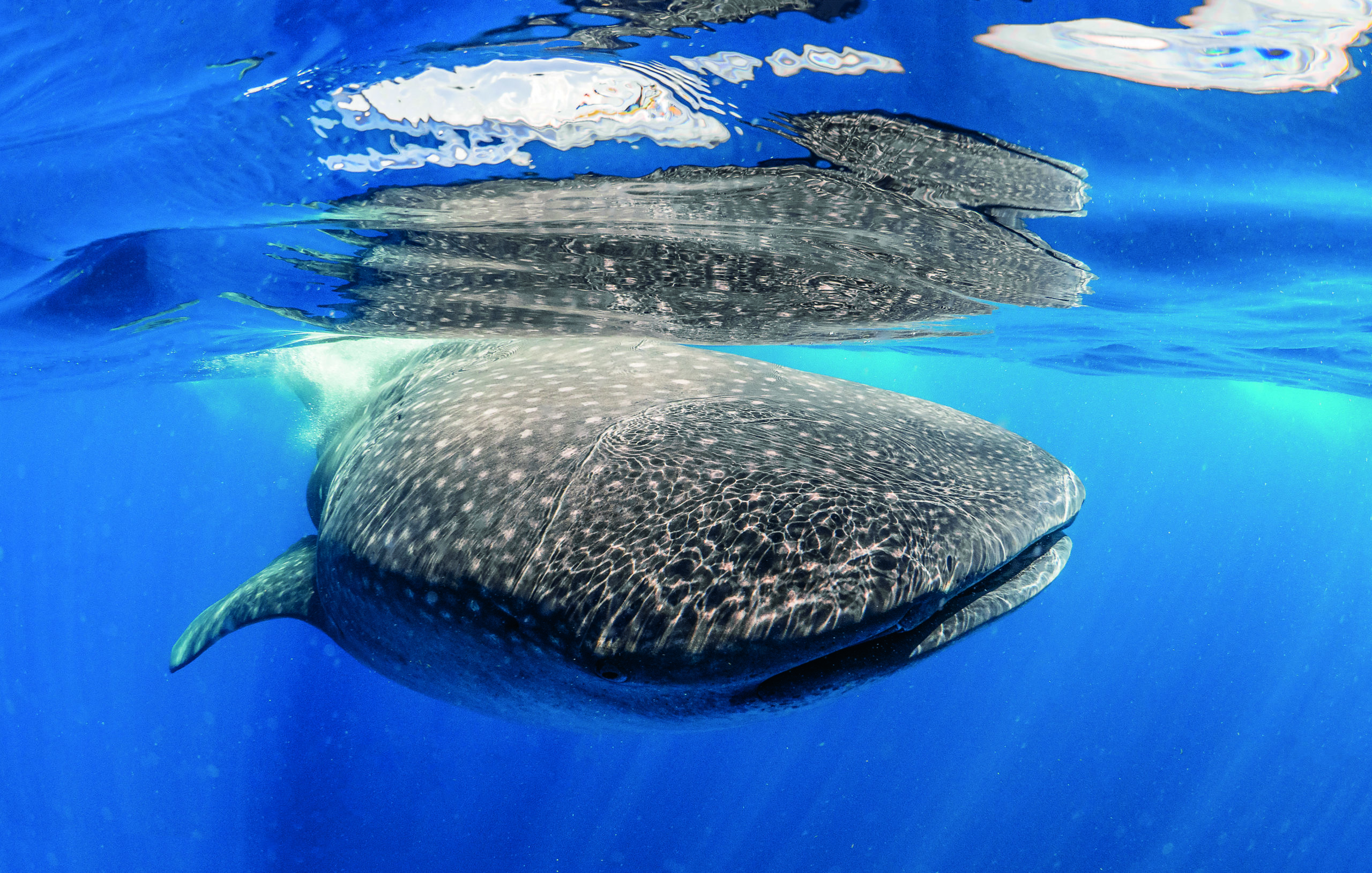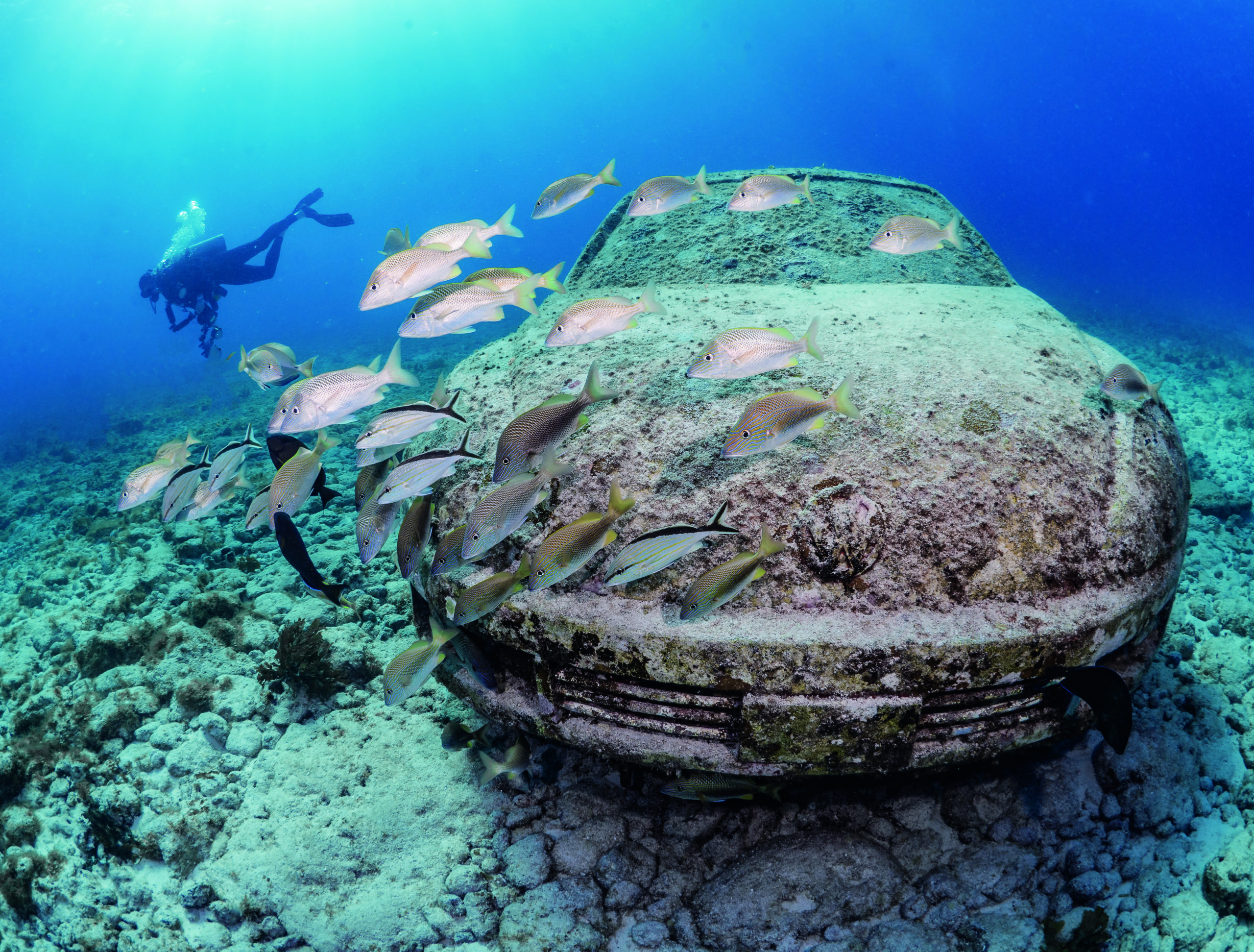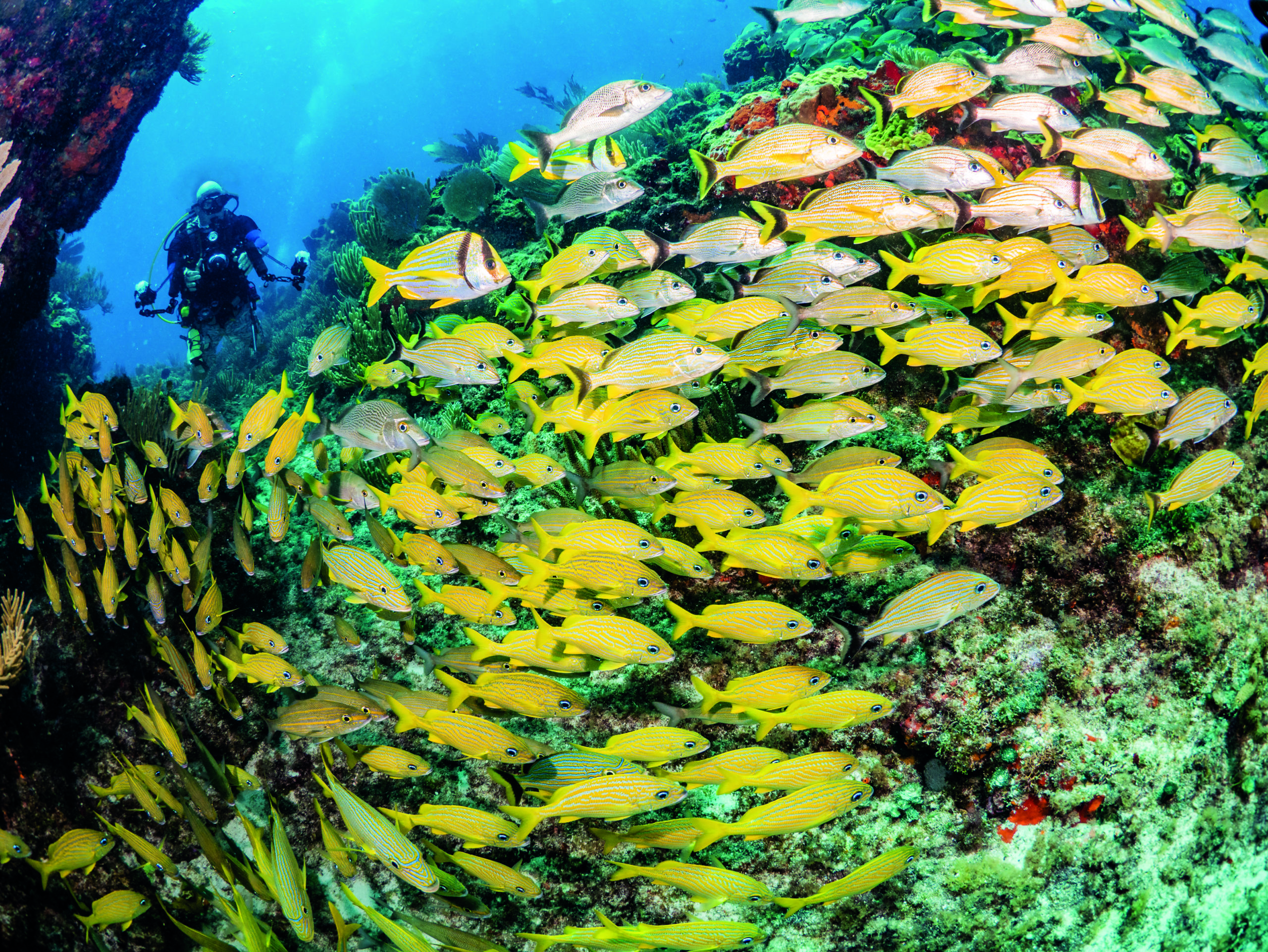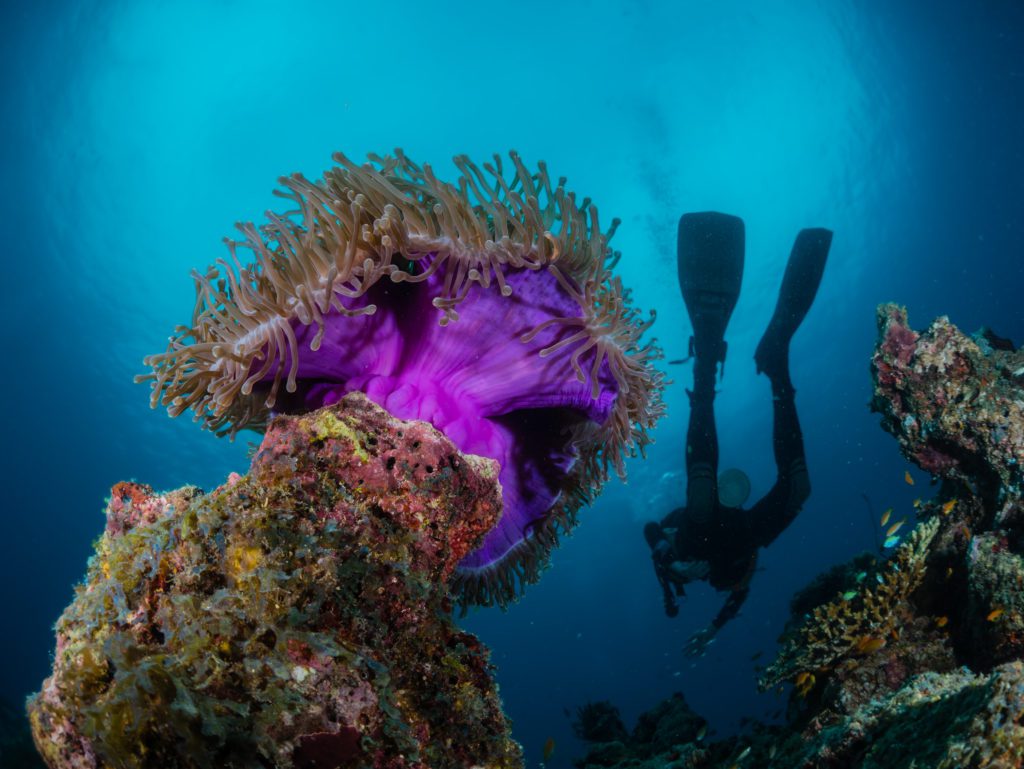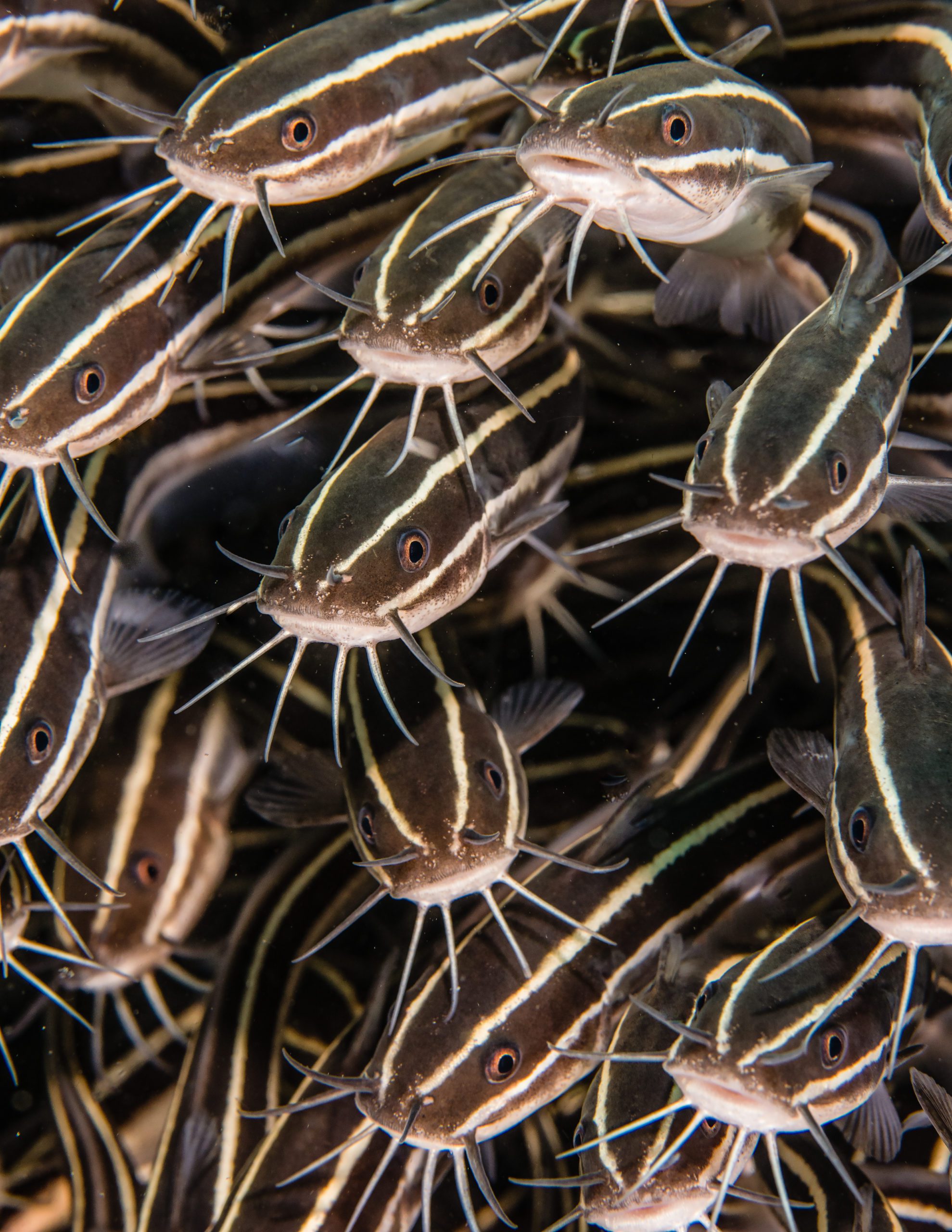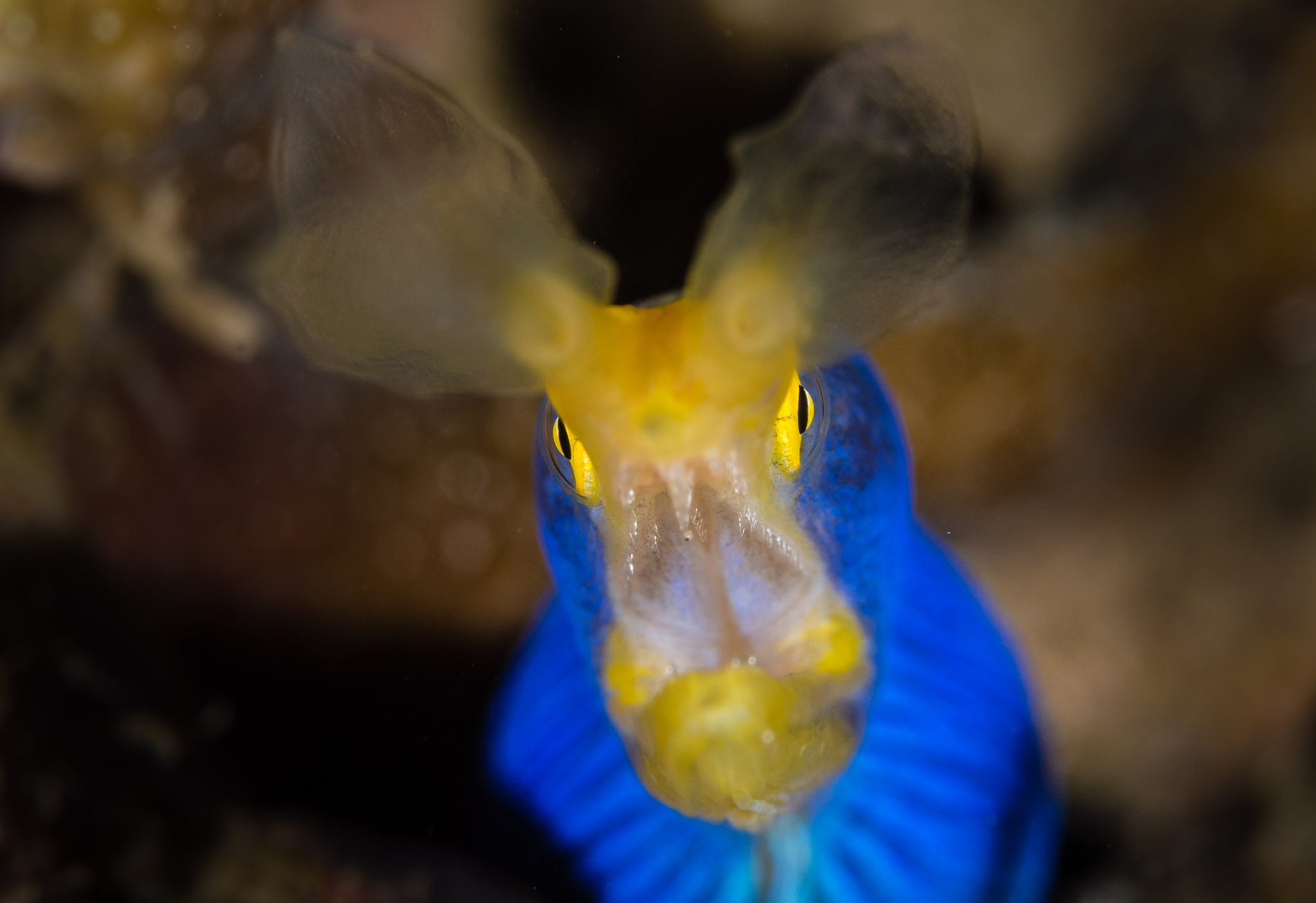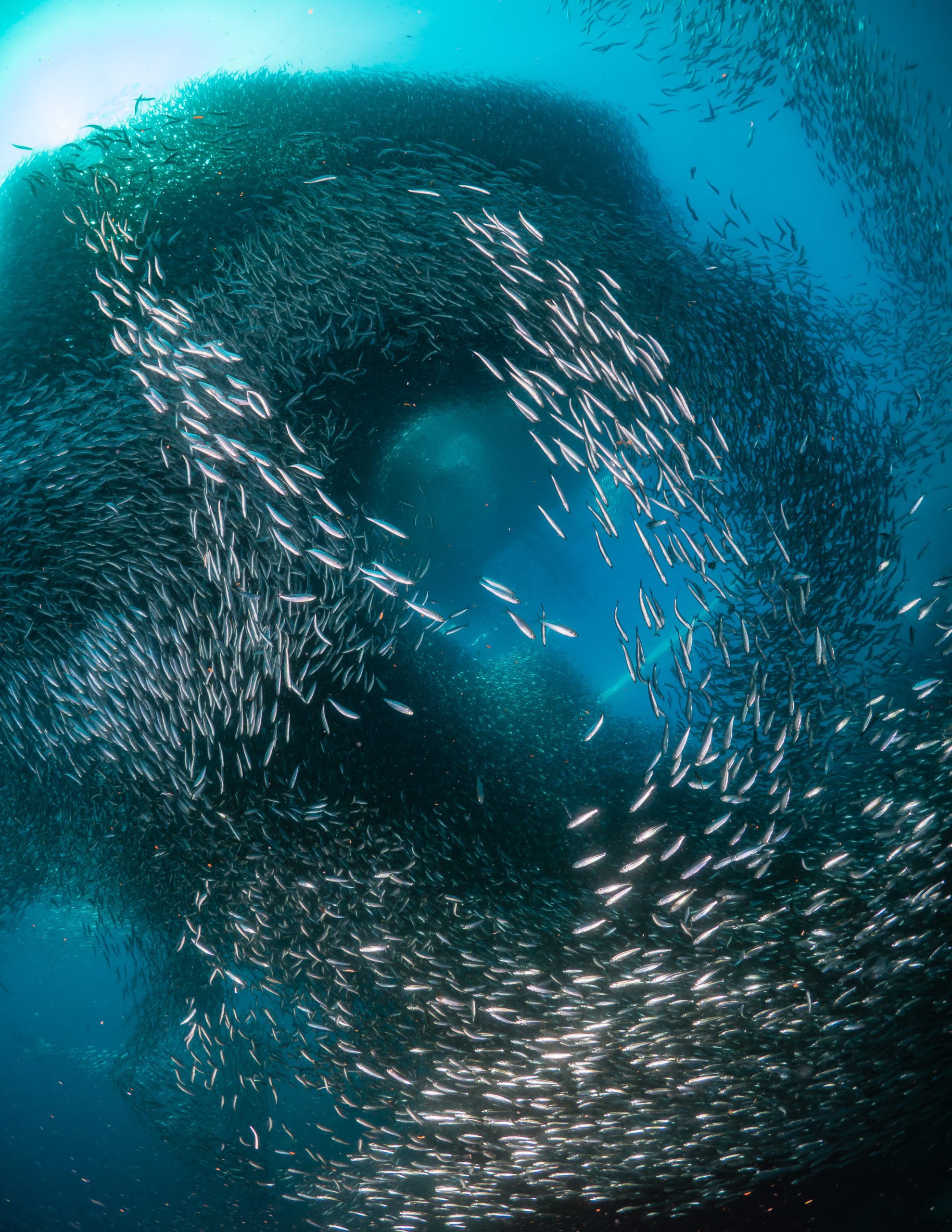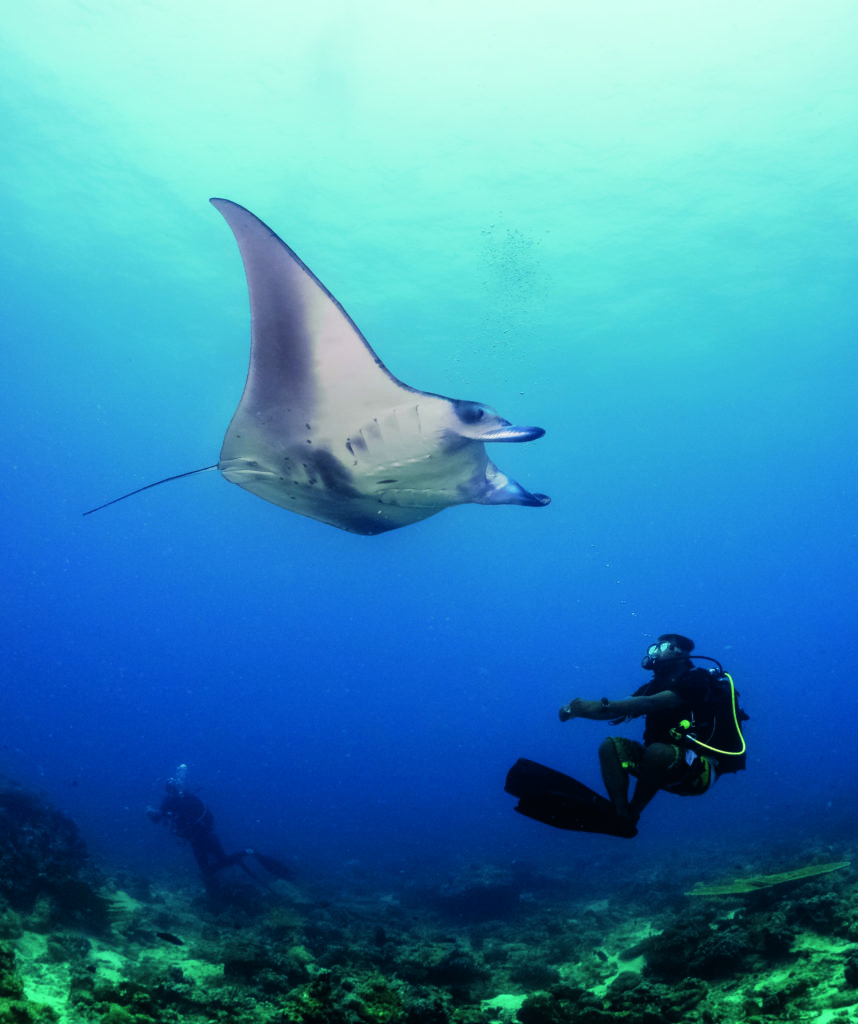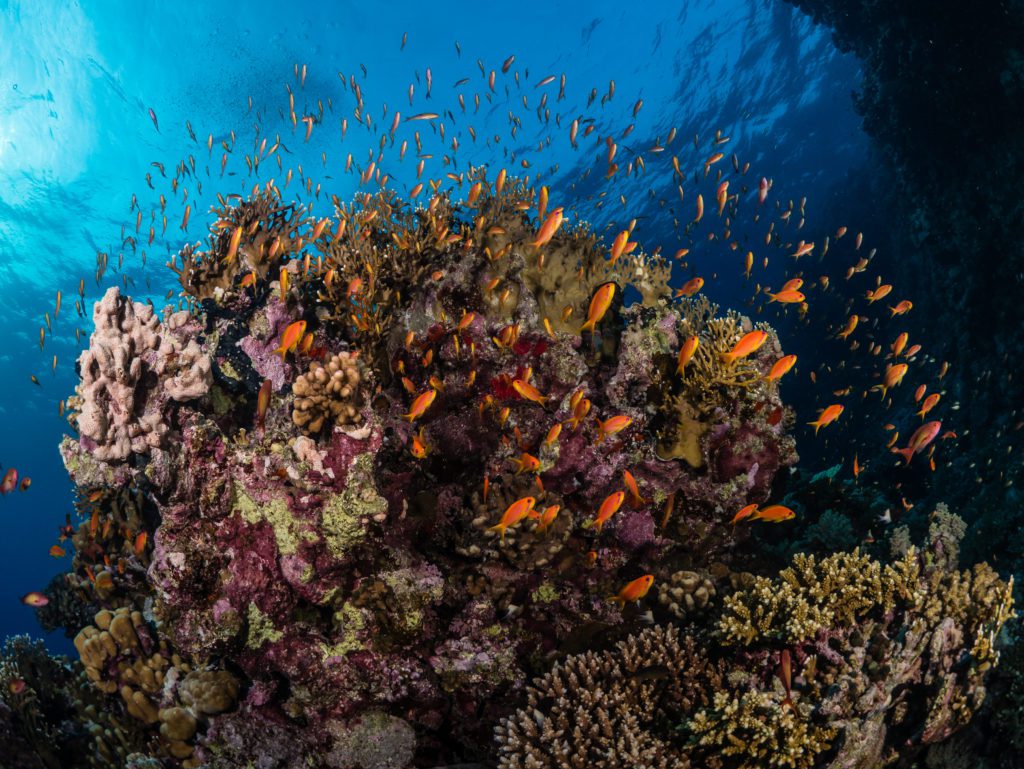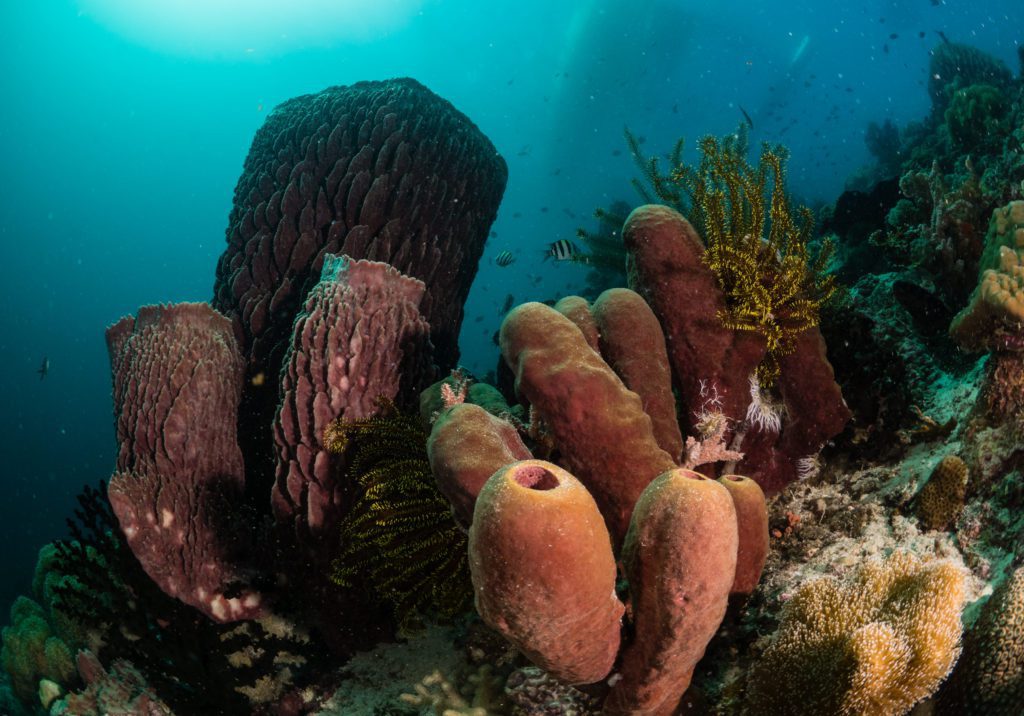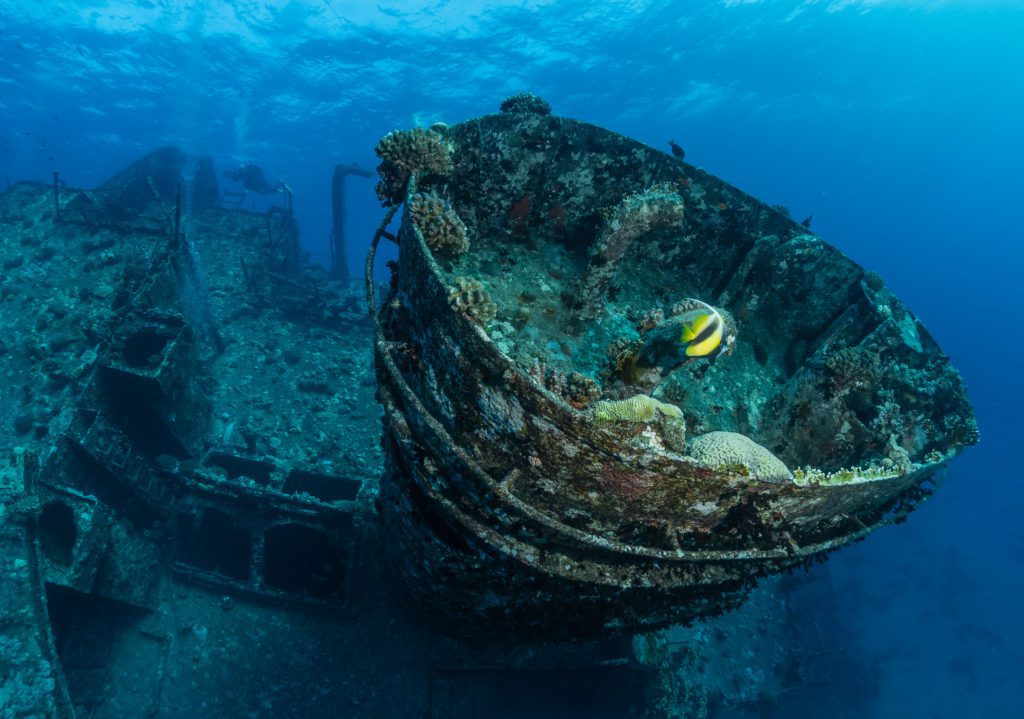Where in the world?
Paul Duxfield takes a look at a selection of very different destinations around the world which offer visiting photographers all manner of subjects
As the cold dark nights start to draw in, and the UK diving season becomes much less of a draw except for the hardiest souls, for a lot of us the idea of escaping to sunnier climes with warmer, clearer waters is a very attractive proposition.
If you’re keen on underwater photography, then this can also be a factor when choosing an overseas trip, as different parts of the world offer very different photo opportunities.
So in this column, I’m going to look at a few destinations in the world that have given great photo for differing reasons.
And I’m going to save my favourite all-round location for last.
Different Strokes for Different Folks
Underwater photography like all hobbies has its sub-genres, the two main ones being wide-angle and macro. These in turn can be divided into those that really love wrecks, or reef scenes, or those that really love nudibranchs over shrimps, crustaceans and other little critters.
Personally I think variety is the spice of life and I like a bit of everything, which is handy as a big part of my job is showing others how to shoot specific subject matter, so I’m as happy doing some extreme super macro, photographing the horns of a nudibranch, as I am shooting the Thistlegorm at 5.30am.
And I do find that people fall into broadly three camps, the largest of which appears to me to be the macro lovers, followed closely by those that love to shoot wrecks, and the remainder being a bit like me and having no particular preferences.
This has shaped and formed my choices of destination for underwater photography workshops.
And the good news is that in most places around the world, if you have good eyes, or better still a local guide who is responsive to your needs, then macro photography is pretty much a given, and while some places are better than others, it’s nearly always possible to find teeny tiny beasts to shoot worldwide.
It’s trickier, however, to always find good wide-angle choices, particularly if you also want better vis to shoot in and so a bit of research and background into your choice is vital, so I am going to first look at one of my favourite destinations, which I believe is a winner for most, and that’s the Philippines.
Filipino Photo Fun
The Philippines covers a huge area of different-sized islands in the Far East, and one of my favourite spots for the workshops is the area around Moalboal, as it has short transits to dive sites, a good variety of sites too, with out-and-out muck diving spots, alongside great coral-strewn mini walls with shallow well-lit soft coral gardens, with everything from frogfish to turtles, and more varieties of nudibranch and weird crustaceans than you can shake a pointer stick at.
And even the spots that aren’t full-blown muck dives always have a wealth of small life to keep the macro hunters happy, so for me it’s a win-win.
If you’ve never been further than the Red Sea before, you’ll be amazed by the differences in types of corals – the fan corals look different, the hard corals are different, it’s like being on a different world.
And I think it’s astonishingly good value for money too, most resorts are full-board with great food.
Different spots across the Philippines have good pelagic encounters with sharks, mantas and other bigger creatures, but for a good introduction to the area, which will add loads of great new pictures to your portfolio, then I think the area around Moalboal takes a bit of beating.
Mexico
My first trip to Mexico was, for me, a revelation, I had been to the Far East many times and just sort of assumed that the Yucatan Peninsula would be a bit like the familiar Red Sea, but with more of our American friends. How wrong could I be.
Like the subtle differences in types of coral I had become aware of in the East, I experienced a totally different backdrop to my shots. Mats of disorientating sea grass swaying in the current, two-toned purple sea fans, and statues!
The statues were very specific to the island of Isla de Mujeres, where we were staying, and if you want a Mexican trip away from the crowds, I would wholeheartedly recommend it.
It also happens to be one of the best places in the world to see whalesharks at certain times of the year. I’ve seen them on both times I’ve visited, and the second time there were apparently over 200 at the spot we were at, hungrily gorging on the upwellings of plankton that draws them to the area.
This also has the disadvantage of compromising the visibility, so you really need to be close to them with preferably a fisheye lens to do them justice.
Back to the statues, Just offshore is an underwater museum set up by a fellow Brit, Jason deCaires Taylor, who has become famous for placing unusual monuments and artworks in the shallow areas rarely more than five minutes offshore. Over time they have become havens for all manner of marine life that have set up home within the shelter of everything from circles of spooky figures to concrete Volkswagen Beetles and miniature houses.
The island and the surrounding uncluttered reefs were plenty enough, but for me the icing on the cake was when we moved back to the mainland a short ferry ride away.
As this part of the Yucatan Peninsula is not only steeped in Mayan history providing fabulous topside photo opportunities, but is also like a Swiss cheese full of flooded caverns and caves which provide some of the most-stunning photography and diving that I had up until then experienced.
And the good news is that the more-photoworthy cenotes, as they’re called, are also some of the easiest to negotiate, so even if you’re a total novice they are very achievable, and so your initiation to this almost-supernatural realm is very smooth and not in the slightest bit claustrophobic.
Definitely a better destination for those keen to broaden their wide-angle skillset.
Indonesia
I have been to Indonesia many times from Ambon to Bali, Lembeh and Bunaken. And I never tire of the place, it specialises in specialising. What I mean by this is that whilst it looks a lot in appearance like the Philippines, with a similar variety of corals, fish and smaller life, different spots are known for very distinct styles of photography. The most famous of these is probably Lembeh, which has become a mecca for underwater photographers firmly lodged in the macro camp.
Called the ‘weirdest square mile on earth’, the underwater world here is a very bizarre contrast of rubble, and rubbish-strewn brown ugly sand bottoms, but it also happens to be populated with an incredible density of the smaller marine life, an enormous selection of cephalopods, with wonderpus, blue-ringed octopus, mimic octopus, flamboyant cuttlefish and even the very odd hairy octopus.
It’s beyond the scope of this article to list the quite frankly bewildering array of the weird and wonderful, colourful critters that abound in the dull, less-than-spectacular surroundings.
So it’s very much a spot to hone your macro and super macro skills, and underwater photographers and those that love the odder creatures in the sea really love this place.
If all that muck and rubbish is not for you, or you want to mix it up a bit, then just a couple of hours away by road and a short boat ride, are the spectacular clear waters and walls of Bunaken just offshore from Manado, the capital of Sulawesi, the Indonesian island these two very diverse places are situated.
Bunaken has some of the largest turtles I’ve seen, on big clear water walls swept by often-strong currents, with schools of fish and swaying, colourful corals.
The Maldives
This iconic travel destination is a bit of an odd one for underwater photographers. People new to the hobby of diving often put these famous Indian Ocean islands at the top of their must-see list.
Mantas, turtles, sharks and, of course, the huge whaleshark are regular visitors to these waters.
And it’s understandable that people want to see these impressive beasts, and are more likely to be impressed by these than they are by nudibranchs and shrimps et al.
One of the reasons these large pelagic creatures frequent the Maldives, though, is because the islands are doused with sometimes very big currents which bring the food they like to eat, this can make the photography a little tricky at times, not to mention the diving, and I’m always reminding newbies to prepare for the potential of powerful currents.
Also a lot of the places that attract the bigger creatures don’t always have the crystal-clear visibility that the travel brochures might hint at.
And if you’re on a mixed dive boat, the necessary discipline of guided diving is important for the guides to maintain safety as I have never seen such a cross spread of abilities that the guides have to deal with, often managing wide-eyed divers just out of an open water course, while also giving a great dive to those more experienced, so don’t expect the same level of freedoms usually afforded to the more experienced, and to be honest, as an ex-guide myself, I take my hat off to the guides here having to manage all this.
However this doesn’t mean it’s not a great photographic dive spot, and I am in talks with operators about formulating a dedicated photo trip here, that delivers the best of what I have experienced in these waters, without it being too difficult to handle.
The Egyptian Red Sea
Ok, I have left my favourite all-rounder to very last, and it’s no wonder I’m fond of the place – I lived and worked in Sharm el Sheikh for a good chunk of my life and consider the place something of a second home.
I still think all round it is one of the best places to visit for divers and underwater photographers, particularly from the UK.
It’s a relatively short flight by comparison to the other spots we’ve looked at, and offers for me the best value and most diverse diving within a short boat ride.
And in the 25 years I have been going there, never has it looked so good, vibrant and full of life, without the huge crowds that used to visit in times past.
It has great dive sites for newbie divers, which also happen to be great for underwater photographers, being shallow, often current free, and packed with loads of photo subjects from the big to small.
For me this is photo and diving Nirvana, and has proved very popular over the years, I’m even starting to get people finishing their Open Water courses on board with no compromises to the regulars.
And as the area is very familiar to me, I can show you some Northern Red Sea dive sites that you may well have never visited on a regular Wrecks and Reefs trip.
So it’s become popular with all divers, who like to be treated like adults. Not just the photographers.
So it’s a win-win all round.
Summing up
Wherever you choose to go in the world, there is sure to be plenty to see and shoot, and to suit all budgets too, but I will always maintain a special place in my heart for the Egyptian Red Sea.
Duxy Escorted Trips
A great way to learn how to use new kit and develop your skills is on a dedicated trip. My escorted trips are for all and if you have a GoPro or compact, I can improve your skills and realise your full potential in an easy-going, relaxed environment. If you’re a more-experienced shooter, my itineraries and locations are carefully picked to be very photographically productive.
Duxy will be leading a Red Sea liveaboard in 2023 – book now.
Photographs by Paul ‘Duxy’ Duxfield
